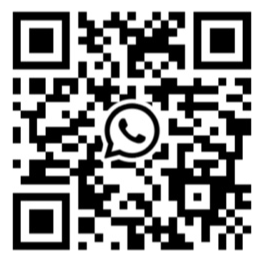Bag Lab
Testing zipper performance with zipper testing equipment
A zipper tester is a device used to evaluate the performance and durability of zipper products, commonly used for zippers in garments, bags, shoes, and other items. It evaluates the durability, tensile strength, abrasion resistance, and reliability of zippers by simulating the opening and closing action of zippers in daily use. The zipper tester repeatedly opens and closes zippers to simulate their real-life use.
This repeated opening and closing test determines the zipper’s ability to maintain stable performance throughout its service life, including its susceptibility to snagging or chain detachment. Additionally, the zipper tester measures the force applied to the zipper during the opening and closing process to evaluate its tensile strength.
Testing the durability of fabric & leather with wear testing equipment
An abrasion tester is a device used to evaluate the abrasion resistance of material surfaces. It is primarily used to test materials’ performance when they come into contact with or rub against other surfaces, simulating the wear they may experience during everyday use. By simulating the friction, wear, and rate of deterioration that materials would encounter under actual use conditions, it assesses the durability and lifespan of the materials.
The taber abrasion tester operates in accordance with industry standards, such as ASTM D4060 and ISO 9352, making it a commonly used piece of equipment for testing the abrasion resistance of a variety of materials, including plastics, leather, fabric, and coatings. It wears down the surface of the samples using rotating abrasive wheels to evaluate their resistance to abrasion. Manufacturers use this equipment to assess material quality, optimize product design, and determine the materials best suited for specific applications.
Testing backpacks and bags with a bag oscillation tester
The luggage oscillation tester is a specialized testing device used to simulate the vibrations and impacts that luggage may encounter during everyday use. It is designed to assess the vibration resistance of various luggage products, including travel cases and backpacks, during transportation. This encompasses evaluating the durability of handles, stitching seams, and the overall structure, as well as the luggage’s ability to withstand the shaking and vibrating that may occur in transit.
During the testing process, luggage is typically loaded with a specified weight and subjected to repeated impacts at a frequency and stroke designed to mimic real-world conditions. The specific settings, such as 30 cycles per minute with a 4-inch stroke for a total of 2500 cycles, should be determined in accordance with the manufacturer’s specifications or relevant industry standards. This process simulates the jostling and bumping that luggage might experience during use, allowing for an evaluation of its durability.
Testing backpack components with environmental chambers
An environmental test chamber, also known as a climate chamber, is a specialized piece of testing equipment used to simulate specific environmental conditions for backpack materials in order to assess the performance and reliability of the product under various climates.
The environmental test chamber subjects backpack materials or components to a variety of physical stress tests by simulating conditions such as high temperature, low temperature, high humidity, dryness, mold invasion, and salt spray corrosion. This ensures that the products can withstand the extreme conditions they may encounter during actual use.
By testing products or materials in an environmental test chamber, manufacturers can predict their performance in real-world conditions and make targeted improvements to optimize the materials or components.
Testing metal parts of backpacks with a salt spray tester
The salt spray test machine, also known as a salt fog chamber, is a device designed to test the resistance of materials and their surface treatments to salt fog corrosion. This machine evaluates the corrosion resistance of products by simulating a salty marine climate, thereby replicating harsh environmental conditions for corrosive testing.
During the test, the machine atomizes a saltwater solution and disperses it through nozzles to create a continuous salt fog, which is then sprayed onto the surface of the sample. This test accelerates the corrosion process, enabling manufacturers to estimate a product’s corrosion resistance under actual usage conditions and to make the necessary improvements.
Testing the longevity of a USB component in a smart backpack with the horizontal insertion tester
The horizontal plug and pull force tester is a device specifically designed to test the insertion and extraction forces, as well as the lifespan, of connectors and typically features a horizontal structure. This tester is used to evaluate the stability, durability, and reliability of connectors during the insertion and extraction process, making it suitable for a variety of connectors found in cell phones, laptops, tablets, USBs, and other electronic products.
The horizontal plug and pull tester typically employs a mechanical arm or robotic hand to insert and remove connectors automatically, simulating the actual plugging and unplugging actions encountered in real-life usage. By subjecting connectors to repeated insertion and extraction tests, the tester can assess their durability and determine whether they will maintain stable connectivity throughout their lifespan.
Testing fabric properties with tensile testers
The universal tensile tester is versatile material testing equipment used to determine the mechanical properties of materials in various testing modes, such as tensile, compression, bending, and shear. This tester can provide accurate mechanical parameters, including tensile strength, compressive strength, modulus of elasticity, and yield strength, offering a comprehensive assessment of a material’s physical properties.
A universal tensile tester typically consists of a fixed base and a moving beam, which allows a sample fixture to apply force. It can measure strain, breaking point, tensile strength, compressive strength, bending strength, and other parameters under stress, thereby assessing the material’s mechanical properties, including strength, toughness, and stiffness.
General-purpose tensile testing machines are used to test luggage or backpacks in the following applications:
– Fabrics and textiles: Measure the tensile strength and elongation of materials used in the body of a suitcase or backpack to ensure that they are able to withstand the intended load and use.
– Straps and handles: Test the durability and load-bearing capacity of straps, handles, and their attachment points.
– Zippers and fasteners: Determine the tensile strength of zippers, buckles, and other fastening devices to ensure they do not fail during normal use.
– Seams and stitching: Evaluate the strength of seams and the force required to cause sliding or breaking.
By using universal tensile testing machines that adhere to industry standards, such as those from ASTM or ISO, manufacturers can quantify and enhance the mechanical strength and flexibility of these materials and components.
Testing fabric color fastness with electric friction tester
The electric friction colorfastness tester is a laboratory device specifically designed to assess the color fastness of a variety of materials under friction conditions, including textiles, knitted fabrics, leather, electroplated metal sheets, and printed materials. It simulates the frictional conditions that may be encountered during everyday use to detect any color changes or fading that occurs post-friction.
The electric friction colorfastness tester is capable of conducting both dry and wet friction tests. Its operation is based on an electric motor that drives a rubbing head to contact and rub against the surface of the sample, thereby simulating the wear process during actual use. During testing, the pressure, speed, and duration of the rubbing head can be precisely controlled to match different usage conditions and wear scenarios. Specific parameters, including rubbing speed, stroke, and force, should be set according to the manufacturer’s specifications or relevant industry standards.
The use of an electric friction colorfastness tester in testing luggage or backpacks extends to the following areas:
– Fabrics and textiles: To assess the durability of dyes and the potential for color transfer when fabrics are rubbed against other surfaces.
– Leather: Evaluating the finish of leather components to ensure color stability and resistance to rubbing off with use.
– Printed materials: Ensuring that prints on luggage or backpacks, like logos or decorative motifs, withstand wear and tear without color loss.
– Straps and handles: Assessing whether materials in high-contact areas, such as shoulder straps and handles, resist fading under frequent friction.
Using the electric friction colorfastness Tester allows manufacturers to replicate the effects of normal wear on these materials, ensuring color stability and preventing color transfer during use.
Testing materials with electrically heated blast drying oven
The electric heating constant temperature blast drying oven is a commonly used piece of equipment in laboratories, mainly utilized for a variety of routine tests such as drying, heat treatment, baking, wax melting, and sample sterilization. Its working principle involves maintaining a uniform and constant temperature inside the chamber by using electricity as the heating source and promoting air circulation with a built-in fan, with precise control achievable through the control panel, including setting the temperature to meet experimental requirements.
In the backpack industry, the electric heating constant temperature blast drying oven is applied in several key areas:
– Material thermal stability testing: The oven is used to assess the performance of backpack fabrics and synthetic materials under high-temperature conditions.
– Adhesive and coating curing: The oven accelerates the curing process of adhesives and special coatings used in backpacks, allowing for the testing of their performance.
– Environmental simulation: The oven simulates the environmental conditions that backpacks may encounter at various temperatures to test the materials’ temperature resistance.
By employing the electric heating constant temperature blast drying oven to assess the performance of backpack materials and components, manufacturers can ensure the durability and functionality of backpacks under diverse environmental conditions.
Testing fabric color with a standard light source color box
The standard light source color box, also referred to as a color matching booth or color assessment cabinet, is a specialized device designed for color management and evaluation. Its primary function is to simulate various standard light sources, providing an environment suitable for the visual inspection and comparison of colors on diverse items.
This equipment typically comes equipped with a variety of light sources that conform to standard or benchmark conditions for visual color assessment, such as those defined by the International Organization for Standardization (ISO).
Standard light source color boxes usually include light sources like D65 (simulating daylight), TL84 (simulating store and showroom lighting), CWF (Cool White Fluorescent), F (typical household lighting), UV (ultraviolet light), and TL83, among others. The purpose of these varied light sources is to help users identify color discrepancies that might occur under different lighting conditions and to confirm color consistency, thereby ensuring controlled and managed color quality.
The use of a standard light source color matching booth in testing luggage or backpacks extends to the following areas:
Fabrics and textiles: Ensuring that the colors of fabrics used in backpacks and luggage are consistent and remain so under varying lighting conditions.
Coatings and prints: Testing the color accuracy of printed patterns or coated surfaces on luggage or backpacks.
Metal hardware: Evaluating whether the color of zippers, rings, and other metal parts matches the rest of the luggage or backpack under different lighting conditions.
Get A Quote
Leading Brand Source Factories
Competitive Wholesale Prices
Quality Assurance, Certified by SGS
End-to-End Supply Chain, Efficient Delivery Guarantee
Diverse Product Range,Three Specialized Factories Producing Different Items
Expert Team, Full-Service Support
Whatsapp Business Account

